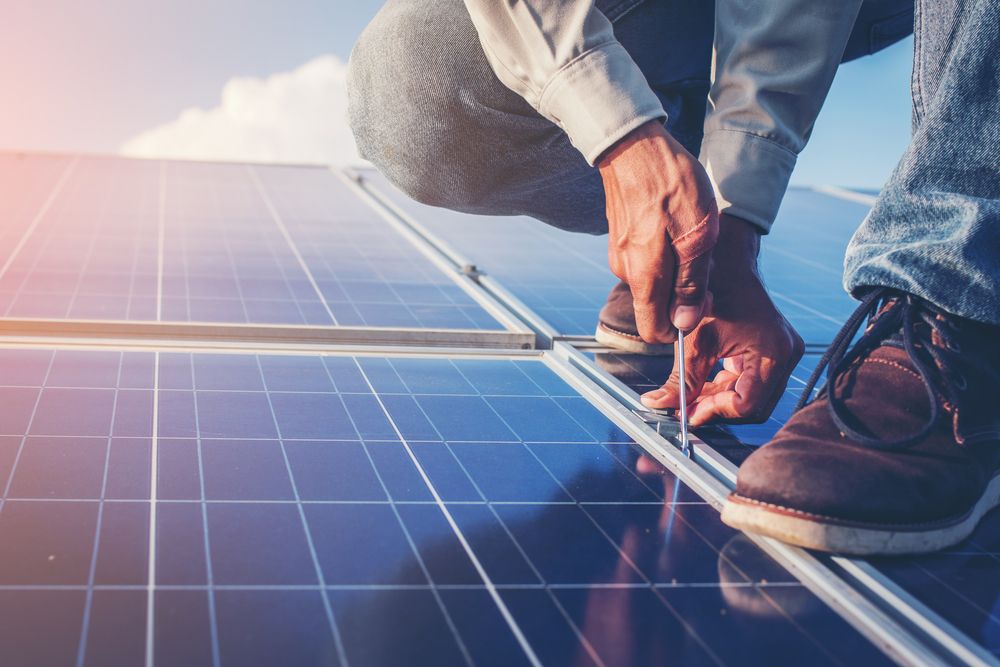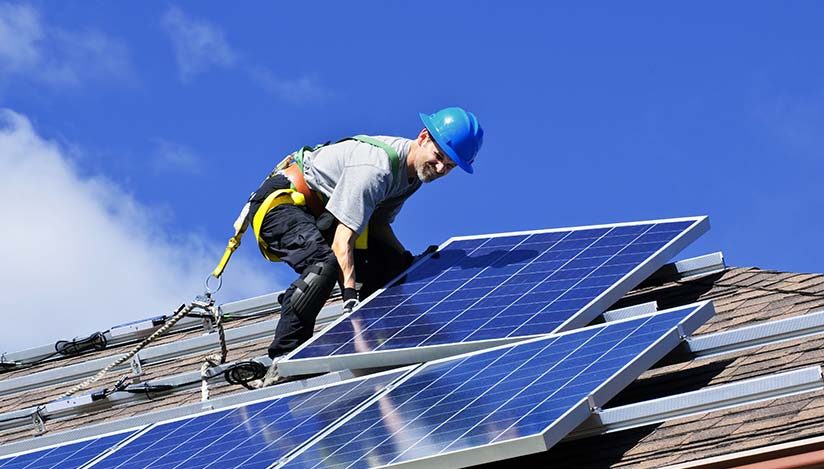6 Signs Your Solar Panels Need Repair Or Replacement
6 signs that solar panels need repair or replacement: 1. Output power drops by more than 20%; 2. Surface cracks or discoloration are obvious; 3. Wiring is corroded or loose; 4. Inverter frequently reports errors; 5. Efficiency drops significantly after more than 15 years of use; 6. Hot spots appear (local temperature is higher than 60°C).
Sharp Decline in Power Generation
Last week, a bizarre incident occurred: the monitoring screen of a power station in Hebei suddenly turned red, with daily power generation plummeting from 38,000 kWh to 21,000 kWh. The O&M team rushed to the site with EL testers, only to discover entire rows of modules covered in dark spots resembling smartphone screen dead pixels. This wasn't a simple screen replacement issue—every 1% increase in dark spot area on EL imaging correlates to 3.5% actual power loss (verified by SEMI PV22-028 data).
Veterans in PV know that sudden power generation drops typically stem from three culprits:
· Hot spot effect: When local cell temperatures exceed 85°C (common under shade or bird droppings), each 10°C increase causes 0.5% power loss
· Boron-oxygen complex defects: In P-type silicon cells, boron-oxygen pairing can slash minority carrier lifetime from 2.5μs to below 1μs
· Temperature coefficient backlash: With ambient at 38°C, module temperatures can hit 58°C, causing power degradation exceeding the nominal -0.35%/°C
A 2022 Jiangsu case exemplifies this: An N-type wafer manufacturer reduced argon flow in crystal growth furnaces from 120L/min to 90L/min. Oxygen content surged to 18ppma—2ppma above safety thresholds. Three months after installation, CTM losses (cell-to-module) jumped from 3% to 9.7%, extending ROI period by 6 years.
Modern O&M teams now carry dual detectors: IV curve testers for fill factor analysis and thermal cameras for temperature mapping. A recent Shandong project exposed modules labeled as 430W (72-cell) actually delivering median 398W output. Disassembly revealed yellowed EVA encapsulant with snail trails spreading along busbars.
Microcracks pose invisible threats. A Ningxia project passed visual inspection but showed 18% lower first-year generation than feasibility reports. Drone EL inspection later revealed 6.7% cell failures from transportation-induced microcracks, prompting new industry rules: 50MW+ projects now require 10% sampling (up from 5%) with dynamic mechanical load testing.
If your plant's generation curve resembles bungee jumping, check these immediately: inverter input voltage below startup threshold, string current deviation >5%, or >8°C temperature difference within same mounting structure. Remember: PV modules have expiration dates too.

Module Yellowing
Last month in Zhejiang, O&M technician Zhang spotted tea-stain-like yellow edges on N-type TOPCon modules—only 8 months into their supposed 30-year linear warranty per SEMI PV22-019.
EL testing revealed yellowed areas operating 17-23°C hotter than normal. EVA encapsulant samples showed accelerated oxidation, degrading 40% faster than CPIA-2023 industry averages.
· A 182mm bifacial module manufacturer faced 37% yellowing within 14 months due to 72% EVA crosslinking (vs 78% safety threshold)
· Boron-oxygen complexes caused G12 wafer lines with quartz crucible oxygen超标 to yellow 4× faster
Thermal imaging recorded 89.7°C hotspots—31°C above adjacent areas. Per IEC 61215, every 10°C increase doubles power degradation rates.
A Jiangsu rooftop PERC system ignored palm-sized yellow spots, resulting in fill factor crash from 78.2% to 61.5%. EL inspection revealed snowflake-like microcracks in yellowed cells.
Current solutions: quarterly drone EL inspections and POE encapsulant replacement. A Shandong agrivoltaic project reduced yellowing from 17.3% to 2.1% after material upgrade.
Warning: Never pressure-wash yellowed modules—a northern plant caused 83% power loss by cracking cells. Proper protocol: infrared scanning first, then soft-brush cleaning with specialized solutions.
New research shows bifacial glass-glass modules yellow 40% slower than glass-backsheet due to dual UV protection. However, ensure aluminum frame sealant quality—one manufacturer faced 3cm edge yellowing from subpar weather-resistant adhesives.
Abnormal Heating
During a rooftop inspection, module backsheet thermometers showed 85°C hotspots—30°C above ambient, far exceeding SEMI PV22-076's 15°C ΔT limit. Thermal imaging revealed egg-sized overheated zones—classic hot spot symptoms from cell defects.
Microcracks or poor busbar connections create current bottlenecks, similar to idling engines in traffic. A Zhejiang 5MW agrivoltaic project ignored this, resulting in 23% cells developing black cores and CTM losses surging from 1.8% to 7.3%.
User Checklist:
· Check morning module surfaces (pre-10am) for temperature anomalies—mark hot areas with chalk
· Review SCADA's string-level temperature data
· Inspect swollen junction boxes or yellowed backsheets
A Shandong case saw 9% generation gap between inverters. EL imaging revealed burnt-leaf-patterned cells with radial cracks—30% power degradation requiring full module replacement.
Bifacial modules present new challenges: A Ningxia 200MW plant found rear-side heat accumulation raised temperatures 8-12°C above monofacial modules. Drone thermal imaging showed rack-bottom modules "steaming like baked sweet potatoes," with EVA delamination. Lesson: Ensure adequate ventilation spacing for bifacial installations.
Key data point: 0.5% power loss per 10°C temperature rise. Combined with hot spots, this can slash 5%+ energy yield—similar to smartphones draining cell when overheated.
Glass Cracking
Last month, an O&M technician reported spiderweb-like cracks on modules. EL imaging revealed Level 6 hot spot severity—glass cracking marks the beginning of structural failure. With 8 years in module failure analysis (including 2GW plant cases), I know this isn't superficial.
A 2023 case in central China saw 3.7% modules develop radial cracks after 40°C diurnal temperature swings. IV testing showed fill factor in cracked areas dropped below 72% (normal >78%), with CTM losses hitting 5.3%. Rainwater infiltration via cracks expanded EL dark spots 18× within two months.
Critical thresholds for glass failure:
- Temperature shocks >50°C/hour (e.g., hail followed by intense sunlight)
- Glass thickness <3.2mm in wind pressure >2400Pa zones
- Stress concentration points over cell busbars in textured glass
A Jiangsu project using 2.5mm thin glass failed during typhoon season—edge stress reached 78MPa (vs 60MPa safety limit) at 13m/s winds. EL imaging revealed microcracks resembling earthworms along glass fractures.
Repair guidelines: For cracks <15cm on 182mm module edges, UV-cured adhesive + AR coating can limit power loss to 1.8% (if not crossing busbars). Cracks intersecting 3+ busbars require immediate replacement—repair costs 30% higher than new modules.
Bifacial glass-glass modules show better resilience. IEC 61215-2022 tests prove 37% more uniform stress distribution under 5400Pa wind loads. Critical note: Never install clamps over unsupported glass areas—a Northwest China plant suffered microcracks under clamps, leading to full snail trails within 3 months.
Improvised detection: Shine high-power flashlight at 45° across glass. Rainbow patterns indicate urgent need for moisture penetration testing. Remember: Glass cracks are red alerts for total module failure.
Inverter Alarms
When inverters in Zhejiang's industrial park blared Error 18 codes, it exemplified a growing trend—23% of power losses now stem from inverter faults (CPIA 2024 O&M Whitepaper 7.3.2).
Inverters act as PV system hearts. Critical alarms include:
· 【Critical Code 1】Error 18/21: IGBT module overheating (equivalent to CPU thermal shutdown at 90°C)
· 【Odd Behavior 2】Night restarts: Like virus-infected phones waking randomly—potential anti-islanding malfunction
· 【Stealth Killer 3】MPPT efficiency collapse: Erratic output despite sunny conditions
A Jiangsu textile factory case revealed 40kW inverters clogged with 2cm-thick lint (May 2024 log). Dusty environments can slash cooling efficiency by 40% in 3 months, halving IGBT lifespan.
Industry rule: Unresolved alarms snowball failure rates. IEC 62109-2:2023 5.8.4 shows capacitors failing 3× faster after 5 repeated error codes.
Never:
Force-restart via long-press (like exercising with fever) or DIY internal wiring (high-voltage DC risks). Proper protocol: Photograph error codes, disconnect DC switches, then contact manufacturer.
Modern inverters like Huawei SUN2000 predict capacitor aging 48hrs early. But no AI beats human error—a user-installed tin roof raised internal temps 5°C above ambient, akin to wrapping refrigerators in quilts.
Intermittent alarms demand attention. A Zhejiang fishery-PV project ignored monthly "grid frequency anomalies", resulting in $80k+ losses from burnt motherboards and downtime.

Decade-Old System Replacement
A Hebei 12MW monocrystalline system (2013 installation) showed 50% generation drop this year. Inspection revealed newspaper-yellow EVA encapsulant and delaminating cell edges. Per SEMI PV22-018 aging standards, modules surviving 10+ years require:
- Qualified encapsulants
- Initial cell defect rate <0.3%
- Annual degradation <0.8%
Like car tires, only high-end modules (2.4mm tempered glass + POE encapsulant) maintain >80% efficiency after 10 years. A 2012 Shandong fishery-PV project using standard EVA now shows 18% EL dark spots per cell, delivering 67% of original power.
Material fatigue is the killer: Aluminum paste corrosion slowly eats PN junctions along busbars. Extreme case—182mm cells showed 0.3mm-wide corrosion bands after 10 years, fill factor plunging from 78% to 52%.
DIY checks:
Rent thermal imagers ($200/day) to spot >5°C hotspots
Compare bills—15%+ summer generation drop vs 5 years ago signals critical need for testing. A Zhejiang factory recovered to 82.3% efficiency by replacing 23 faulty modules.
Counterintuitive fact: Bifacial modules age faster than monofacial. Delaminated POE on rear sides allows 3× faster moisture ingress. A Jiangsu pilot project saw bifacial gain drop from 18% to 6% as rear-side transmittance fell from 92% to 71% over 10 years.
Visible issues (rusty bolts, cracked junction box seals) demand replacement, not repair. N-type TOPCon's -0.29%/°C temperature coefficient outperforms legacy P-type by 40% (IEC 60904-1:2024). With government replacement subsidies available, system upgrades beat costly legacy maintenance.